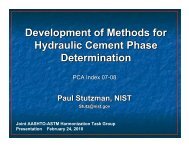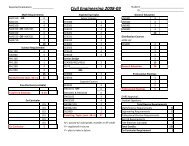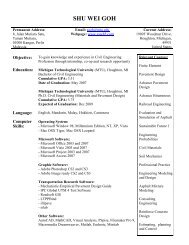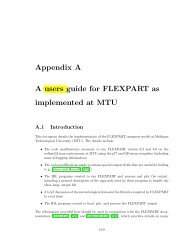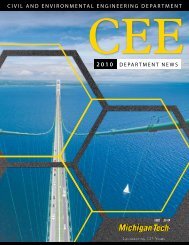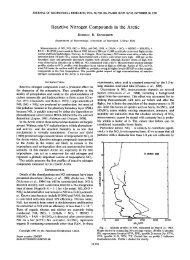Evaluation of Septic Tank and Subsurface Wetland for
Evaluation of Septic Tank and Subsurface Wetland for
Evaluation of Septic Tank and Subsurface Wetland for
You also want an ePaper? Increase the reach of your titles
YUMPU automatically turns print PDFs into web optimized ePapers that Google loves.
times over a two-week period, grew from a height <strong>of</strong> 56.5 to 72.5 to 102.7 inches. This<br />
average growth rate <strong>of</strong> 3.3 inches (8 cm) per day is significantly faster than the reported<br />
seedling growth rate <strong>of</strong> 10 cm per month or 0.33 cm per day (Kalliola et al., 1991). The<br />
sucker grows faster because it already has established roots.<br />
Retrieve Sanitation System Site Description<br />
The Retrieve All Age School sanitation system (see Figure 3-6) began operation in<br />
September 2002 <strong>and</strong> serves one shift <strong>of</strong> approximately 69 students five days per week.<br />
The septic tank <strong>and</strong> wetl<strong>and</strong> treat only black water from the toilets <strong>and</strong> no gray water.<br />
Water from the h<strong>and</strong> wash stations drains to the ground <strong>and</strong> not to the septic tank or<br />
wetl<strong>and</strong>. Three pit latrine buildings (see Figure 3-7) were modified to accommodate<br />
flush toilets. A building with wash basins <strong>and</strong> running water was usually locked so<br />
students used an outdoor spigot next to this building. During the evaluation period two<br />
latrine buildings with four toilets each were in use as well as a urinal that had flush water<br />
running constantly. Water usually comes from the NWC Dantrout groundwater source.<br />
A rainwater harvesting scheme was built with the sanitation system provides water on<br />
occasions.<br />
20



